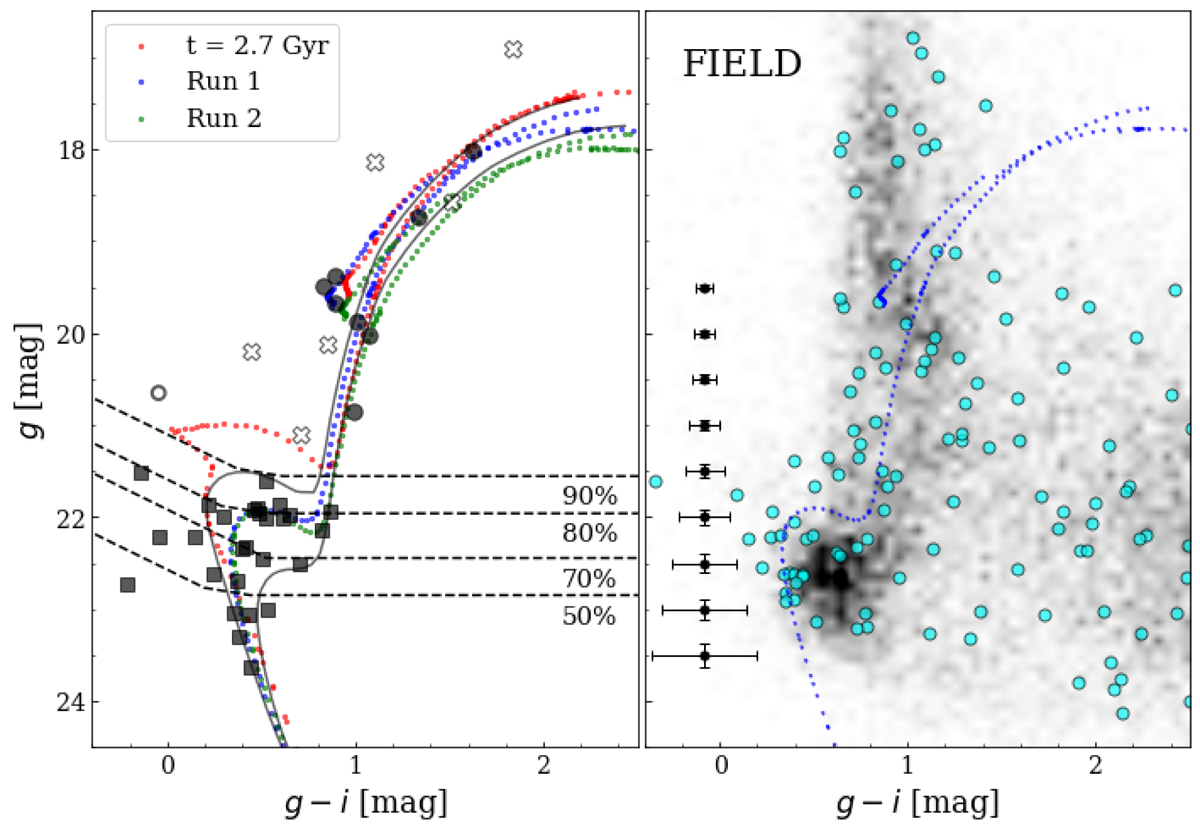Fig. 2.

Download original image
Left: CMD of KMHK 1762. Dots represent stars that remain after Gaia parallaxes and PM cuts. We note that the cross-match with the Gaia dataset was able to clean the CMD only for stars brighter than g ∼ 21 mag. Crosses indicate stars that should not be SC members based on their parallaxes and/or PM estimates. The empty circle indicates a star that is likely non-member of the cluster, but with statistically compatible PMs (see text). Squares are stars for which we do not have any membership information. The red, blue, and green dotted lines represent the isochrone of a SSP with parameters adopted from Geisler et al. (1997), and those estimated in this work, Run 1 and Run 2, respectively. Black solid lines are isochrones of 4 Gyr and 10 Gyr, showing the boundaries of the age gap. In the same panel, completeness curves, which were built through artificial star tests in the inner 0.25′ from the cluster centre, are displayed as dashed lines. Right: cyan dots are field stars taken at 1′ from the cluster centre and lying in an area 25 times larger to compare the CMD of KMHK1762 with that of a local field. In the background, the Hess diagram of all stars within the YMCA tile 5_38 is displayed. Blue points represent best-fit isochrone from Run 1. In the same panel, we show the typical photometric uncertainties.
Current usage metrics show cumulative count of Article Views (full-text article views including HTML views, PDF and ePub downloads, according to the available data) and Abstracts Views on Vision4Press platform.
Data correspond to usage on the plateform after 2015. The current usage metrics is available 48-96 hours after online publication and is updated daily on week days.
Initial download of the metrics may take a while.


